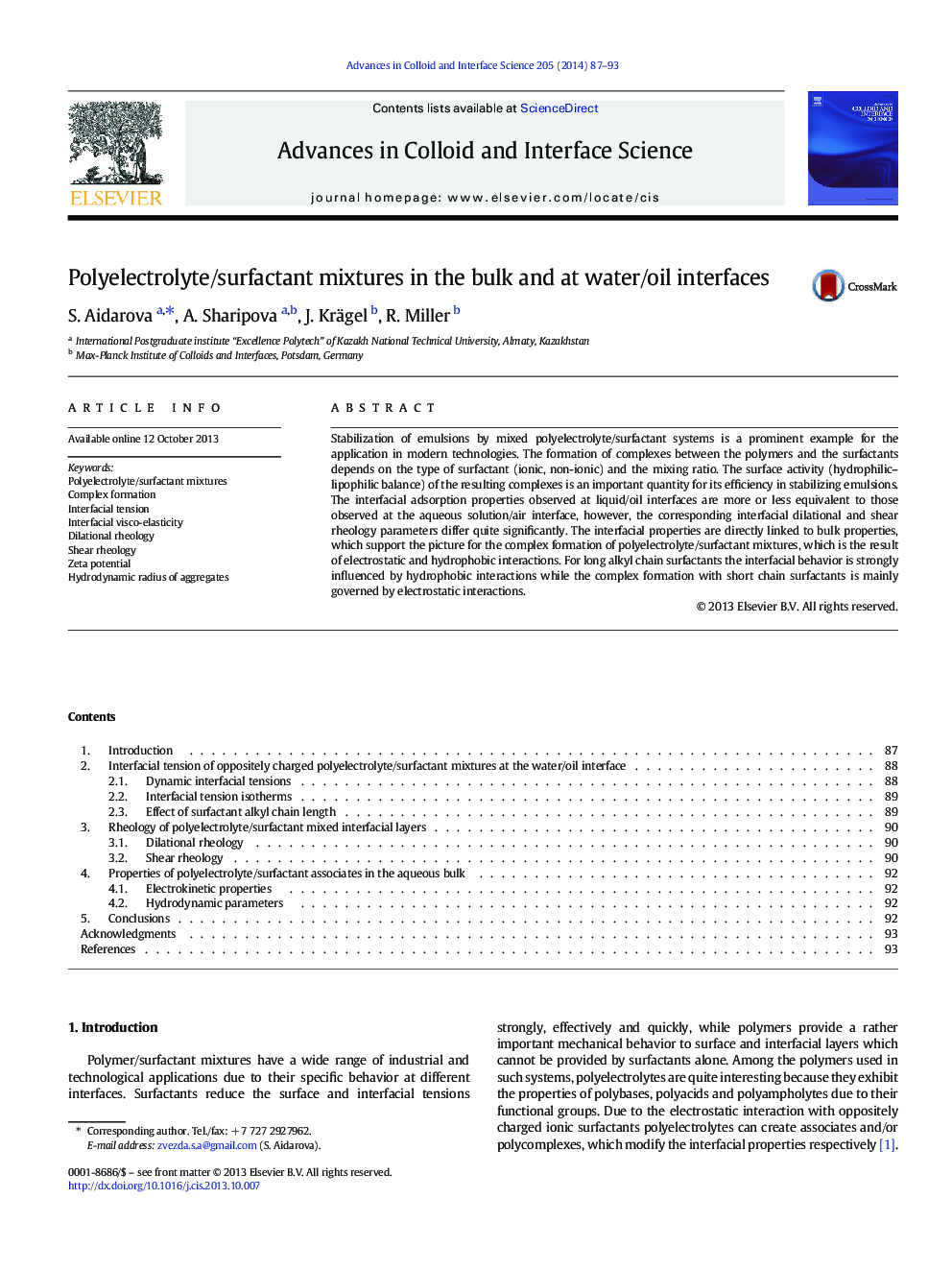| Article ID | Journal | Published Year | Pages | File Type |
|---|---|---|---|---|
| 590728 | Advances in Colloid and Interface Science | 2014 | 7 Pages |
•Polymer–surfactant complex formation depends on surfactant type and mixing ratio.•The interfacial properties are directly linked to bulk properties.•Surfactant hydrophobicity influences on type of interactions
Stabilization of emulsions by mixed polyelectrolyte/surfactant systems is a prominent example for the application in modern technologies. The formation of complexes between the polymers and the surfactants depends on the type of surfactant (ionic, non-ionic) and the mixing ratio. The surface activity (hydrophilic–lipophilic balance) of the resulting complexes is an important quantity for its efficiency in stabilizing emulsions. The interfacial adsorption properties observed at liquid/oil interfaces are more or less equivalent to those observed at the aqueous solution/air interface, however, the corresponding interfacial dilational and shear rheology parameters differ quite significantly. The interfacial properties are directly linked to bulk properties, which support the picture for the complex formation of polyelectrolyte/surfactant mixtures, which is the result of electrostatic and hydrophobic interactions. For long alkyl chain surfactants the interfacial behavior is strongly influenced by hydrophobic interactions while the complex formation with short chain surfactants is mainly governed by electrostatic interactions.
Graphical abstractFigure optionsDownload full-size imageDownload as PowerPoint slide
